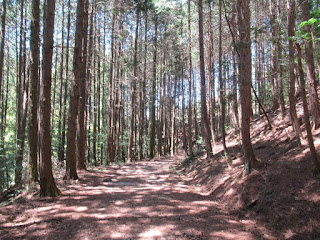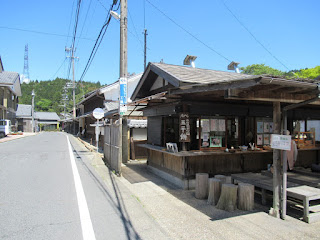I
resumed today’s walk from Fukakaya between Ohi, the 46th shukuba station, and Okute, the 47th;
I moved through Okute and Hosokute, two small shukuba stations in the mountainous areas, and arrived in Mitake,
the 49th station. It was a tough walk of more than 20 kilometers.
The
Jusan Passes (Thirteen passes) lie between Ohi and Okute. I moved through the
steep road from Ena City, to which Ohi station belongs, to Mizunami City.
I
found some golf balls carried on Nakasendodo.
The woods are deep in some parts.
Not only Japanese cypress and cedar trees but also cherry covered the the road. (See the top photo)
The woods are deep in some parts.
Not only Japanese cypress and cedar trees but also cherry covered the the road. (See the top photo)
Okute
lies quietly in the mountainous area. The community is far from railway
stations and the highways.
An
old house of the Edo era, which was used as an inn, a trading house and other
purposes, has been converted into an information center. I visited there; was
warmly welcomed and received good explanations on the shukuba station as well as the house. The house is now a national
tangible cultural property.
Moreover,
I received a memory card by post mail after my return to my home in Tokyo. I
strongly felt Okute’s passion to promote tourism and to reactivate the
community.
The
road from Okute to Hosokute, the 48th station, also goes mountainous
areas. A part of the road around the Biwa Pass is paved with stones.
I
heard loud sounds of vehicle motors as I approached Hosokute. There is a Motorcycle
raceway near Hosokute. I found many sport type cars around the area.
I
found a solar panel generators in the shukuba
station. I have seen many solar panels at the sides of Nakasendo as well as
Tokaido during my walks. It is, however, the first experience to see the panels
inside the station.
An
old inn named Daikokuya is still open in Hosokute. The inn was established in
the 1850s (late Edo period). It attracts many foreign tourists.
There
is another stone-covered slope between Hosokute and Mitake. It is called
Utai-zaka. The stones were curved when the road was developed in the Edo era.















No comments:
Post a Comment